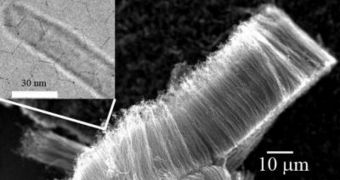Scientists at the University of California in San Diego (UCSD) have recently discovered that defects that are artificially induced in carbon nanotubes (CNTs) may have the ability to significantly boost research in the field of supercapacitors. The scientists behind the innovation explain that these devices incorporate both the high-storage capacities of conventional batteries, and the fast recharging times of electrochemical capacitors. As a result, they are best fit to be used for a wide array of applications, if only a stable, high-power form were to be found.
The new work brings this objective within reach. Carbon nanotube-based supercapacitors are not a new idea, but producing them has proven to be tremendously difficult. The new insight into the behavior of flawed nanotubes could add a significant plus to these efforts. However, the fact that they can be used for such applications increases their overall “fame,” as one of the most important, new materials to be discovered in the 21st century. The tubes are essentially sheets of graphene that are rolled up in circular patterns. They can be grown to be as thick as a single-atom.
“We first realized that defective CNTs could be used for energy storage when we were investigating their use as electrodes for chemical sensors. During our initial tests we noticed that we were able to create charged defects that could be used to increase CNT charge storage capabilities,” UCSD graduate student Mark Hoefer explains. He worked with his supervisor, Prabhakar Bandaru, who is a professor in the UCSD Department of Mechanical and Aerospace Engineering. Details of the team's work appear in the latest issue of the scientific journal Applied Physics Letters.
“It is important to control this process carefully as too many defects can deteriorate the electrical conductivity, which is the reason for the use of CNTs in the first place. Good conductivity helps in efficient charge transport and increases the power density of these devices,” Bandaru says of the challenges facing future teams trying to continue work in this field. “At the very outset, it is interesting that CNTs, which are nominally considered perfect, could be useful with so many incorporated defects,” he adds.

 14 DAY TRIAL //
14 DAY TRIAL //